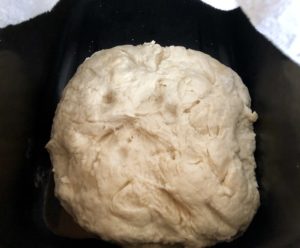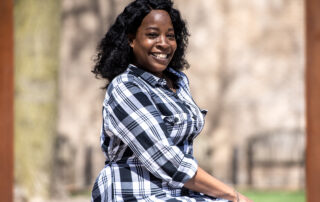This story is part of Wisconsin Life’s Food Traditions series.
Katherine Denomie lives on the Bad River Reservation in northern Wisconsin, but she’s originally from the Fond du Lac Band of Lake Superior Chippewa.
When she was 19 years old, Denomie’s mother first taught her how to make frybread. She remembers attending American Indian Movement (AIM) pow wows with her mom when she was young. Founded in 1968, the organization protested on behalf of American Indian civil rights. The group sought protection of tribal sovereignty, treaty rights and restoration of their lands. Denomie’s mother was often one of the main cooks for the feast at the pow wows.
Denomie mixes flour, yeast, sugar, salt, oil and milk to make the dough for frybread. She lets it rise for about a half hour before she fries it in oil for a minute or two on each side. Denomie couldn’t remember her mom’s exact recipe so she turned to one on the side of a commodity flour bag.
For Denomie, fry bread is a way to make a living. She just began selling it as part of her business Denome Dough, which she started in July. “Not many people make frybread anymore by hand,” said Denomie. Many years ago, people would make it in a kettle over a fire.
“You can make it anywhere. That’s why it was good for Indian people because they could make their bread anywhere they were camped at,” she said.
Frybread appears to have originated in the 1800s when the U.S. government forced many American Indians to move onto reservations. They were given commodities like flour, lard and sugar to survive.
==
SONG: “Ojibwe Women’s Song” by Darren Thompson












